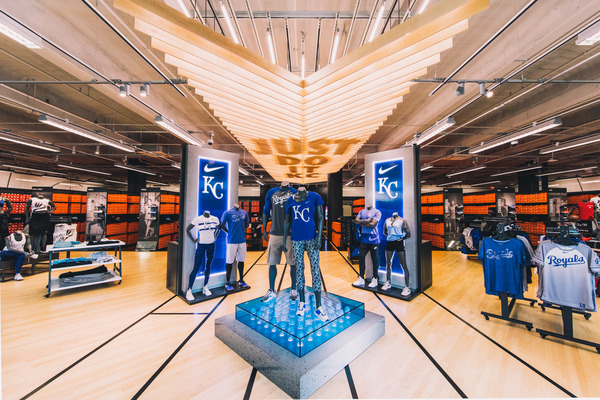IRDC 2024: Rethinking Retail
BRR Architecture was a proud sponsor and attendee of this year’s International Retail Design Conference (IRDC). Hosted in Kansas City, Missouri by VMSD Magazine, the conference provides the retail industry with an annual opportunity for professionals to connect and share industry insights.
At BRR, our firm keeps our compass pointed towards the future of the industry. We stay ahead of retail design trends and our designers work to anticipate the future of the retail environment to create modern and stimulating stores for our clients’ customers. Through that same lens, our team was excited to attend this year’s conference and engage in the conversations surrounding a series of common themes emerging across the retail industry.

Redefining the Retail Experience
The consumer’s in-store experience was a key theme at IRDC. Clients and designers are continuously looking for opportunities to personalize products and services and offer a unique opportunity for consumers to interact with an item. From clothing brands providing an on-site tailor for quick alterations to shoe companies having an interactive treadmill for finding a shopper the perfect shoe, brands are individualizing the consumer’s experience while in the store.
While online retail continues to flourish in the wake of faster shipping, in-store shopping is undergoing a transformation to create a destination that allows consumers to have a hands-on experience with products they may not gravitate towards online. In an effort to entice shoppers into the store and keep them there, retail companies are shifting their focus to what they can offer in the store.
BRR takes this transformation as an opportunity to innovate these experiences and integrate them into store layouts for locations both large and small. In addition to unique offerings, the store needs to maintain a consistent shopping experience that aligns with the company’s brand standards that caters to the consumer that wants to quickly purchase a single product. Variety, consistency and interactive displays will be key to a modern shift in retail.
Innovating Flagship Locations
As retailers provide customers with an experience tailored to their brand, scalability and variety come to the forefront of considerations for the design of future stores. Flagships are investing in specialized activities that customers can engage with as a way to compete with online shopping and entice shoppers to come into a brick-and-mortar establishment.
While most brands have a flagship location located in an urban core, some brands have been pivoting their strategy to focus on the potential of smaller stores in suburban areas. From a design standpoint, both options have a wide variety of potential. Smaller stores cost less to construct and allow the opportunity to utilize richer materials. Large flagship locations offer the footprint to implement larger product displays and more interactive offerings but can open a discussion for implementing sustainability measures.
While brands are investing in the experience of their stores – both large and small – it heightens the significance of modularity of store formats. Going forward, designers will need to consider how to minimize the size of flagship offerings without sacrificing the experience for the consumer.
Mixing Tech with a Personal Touch
In the wake of customer experiences and interactions, companies are implementing technology as a way to support face-to-face interactions with an associate. Craving connection, consumers now treat in-person shopping less as a task and more as a social outing. With online shopping being prevalent and accessible, consumers who travel to a mall or shopping center expect more than buying a product that can be purchased online.
Retailer’s focus has shifted to in-person interactions, allowing associates to be a major element of a customer’s shopping experience. Associates elevate their customer service and assist shoppers with feedback, helpful suggestions and assist with fulfilling order in the case that an item is out of stock.
Though technology hasn’t been removed entirely, it’s utilized in different forms as shoppers demand more. Designers find themselves implementing tech-focused displays into a store layout to let these moments be center stage for the customer. Technology is also mainly used as a tool that can assist with shopper-associate interactions. Technology can be used to determine a runner’s ideal shoe or the best laptop for a young professional. However, it’s important to note that the associate is the driving force that encourages customer loyalty and creates a positive association with a brand.
Designing Tomorrow's Retail
The future of retail continues to shift and evolve as both brands and consumer’s needs and priorities shift. At BRR, our designers stay ahead of these trends and partner with our clients to envision and anticipate future direction in retail and how we can accommodate these needs through innovative design.
Envisioning and designing these environments allows BRR to create exciting and innovative spaces for our clients.











